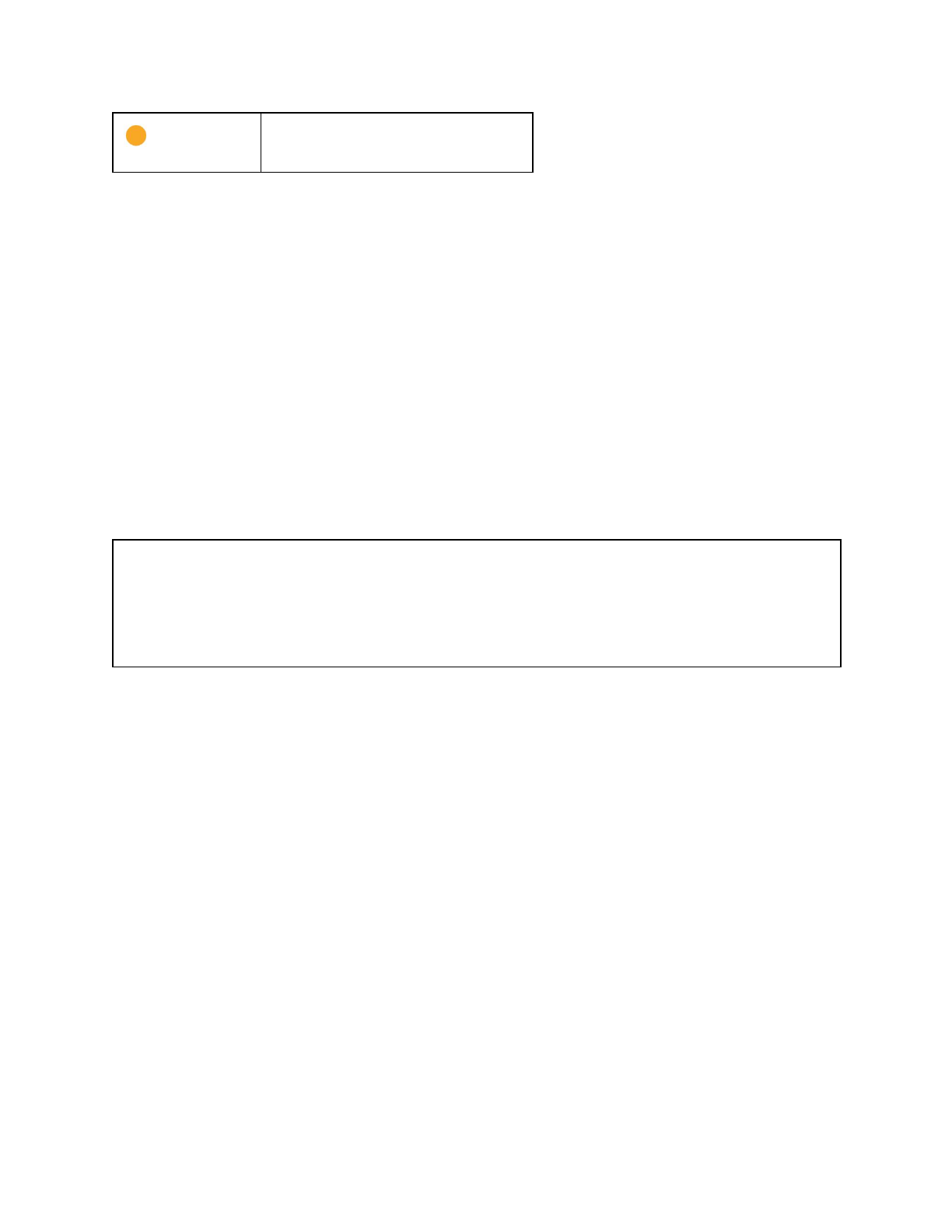Google NLS-1304-25 Dual band WiFi Router User Manual User Guide
Google Inc Dual band WiFi Router User Guide
Google >
User Guide

Google Wifi User Manual
Copyright & Trademarks
FCC Statement
Canada, Industry Canada (IC) Notices
Google Wifi setup
Welcome to Google Wifi
What’s in the Box
What you need
Step 1: Find a spot for your Wifi point
Step 2: Plug in your Wifi point
Step 3: Get the App
Step 4: Set up Wi-Fi
Warranty
Copyright & Trademarks
FCC Statement
REGULATORY INFORMATION
NOTE ON INTERFERENCE IN A RESIDENTIAL INSTALLATION
This device has been tested and found to comply with the limits for a Class B digital device, pursuant to part
15 of the FCC Rules. These limits are designed to provide reasonable protection against harmful
interference in a residential installation. Google Wifi generates, uses and can radiate radio frequency energy
and, if not installed and used in accordance with the instructions, may cause harmful interference to radio
communications. However, there is no guarantee that interference will not occur in a particular installation.
If Google Wifi does cause harmful interference to radio or television reception, which can be determined by
plugging in, then unplugging, Google Wifi, the user is encouraged to try to correct the interference by
reorienting or relocating the receiving antenna and/or consulting the dealer or an experienced radio/TV
technician for help.

Google Wifi complies with part 15 of the FCC Rules. Operation is subject to the following two conditions: (1)
the device may not cause harmful interference, and (2) this device must accept any interference received,
including interference that may cause undesired operation.
Changes or modifications not expressly approved by the party responsible for compliance could void the
user’s authority to operate Google Wifi or warranty.
Model: NLS-1304-25
FCC ID: A4RNLS-1304-25 -- your Google Wifi’s FCC ID is printed on its back
To satisfy FCC exposure requirements, a separation distance of at least 20 cm should be maintained
between the antenna of this device and persons during device operation. Operations at closer than this
distance are not recommended.
The antenna used for this transmitter must not be co-located in conjunction with any other antenna or
transmitter.
For indoor use only
Google Wifi was designed by Google Inc. of 1600 Amphitheatre Parkway, Mountain View, California 94043
and assembled in China.
Canada, Industry Canada (IC) Notices
This device complies with Industry Canada license-exempt RSS. Operation is subject to the following two
conditions: (1) this device may not cause interference, and (2) this device must accept any interference,
including interference that may cause undesired operation of the device.
Under Industry Canada regulations, the radio transmitter(s) in this device may only operate using an antenna
of a type and maximum (or lesser) gain approved for the transmitter by Industry Canada. To reduce potential
radio interference to other users, the antenna type and its gain should be so chosen that the equivalent
isotropically radiated power (e.i.r.p.) is not more than that necessary for successful communication.
CAN ICES-3 (B)/NMB-3(B)
Warning:

The device for operation in the band 5150-5250 MHz is only for indoor use to reduce the potential for
harmful interference to co-channel mobile satellite systems;
Radio Frequency (RF) Exposure Information
The radiated output power of this device is below the Industry Canada (IC) radio frequency exposure limits.
This device has been evaluated for and shown compliant with the IC Radio Frequency (RF) Exposure limits.
The device should be used in such a manner such that the potential for human contact during normal
operation is minimized.
When using the device next to your body, maintain a distance of 20 cm (8 inches) from your body to be
consistent with how the device is tested for compliance with RF exposure requirements.
This device has been certified for use in Canada. Status of the listing in the Industry Canada’s REL (Radio
Equipment List) can be found at the following web address:
http://www.ic.gc.ca/app/sitt/reltel/srch/nwRdSrch.do
Additional Canadian information on RF exposure also can be found at the following web address:
http://www.ic.gc.ca/eic/site/smt-gst.nsf/eng/sf08792.html
---
Canada, avis d'Industrie Canada (IC)
Cet appareil est conforme aux normes RSS exemptes de licence d'Industrie Canada. Son utilisation est
soumise aux deux conditions suivantes : (1) cet appareil n'engendre pas d'interférences, et (2) cet appareil
doit tolérer tout type d'interférences, notamment les interférences pouvant provoquer une utilisation non
désirée de l'appareil.
En vertu des règlements d'Industrie Canada, l'émetteur radio de cet appareil ne peut fonctionner qu'en
utilisant une antenne d'un type et d'un gain maximal (ou inférieur) approuvé par Industrie Canada. Afin de
réduire la possible interférence radio avec les autres utilisateurs, le type d'antenne et son gain doivent être
sélectionnés afin que la puissance isotrope rayonnée équivalente (p.i.r.e) ne dépasse pas ce qui est
nécessaire pour une communication réussie.
CAN ICES-3 (B)/NMB-3(B)
Avertissement :

(i) L'appareil qui fonctionne dans la bande 5150-5250 MHz doit uniquement être utilisé à l'intérieur afin de
réduire les risques d'interférences nuisibles sur les systèmes mobiles par satellite qui utilisent les mêmes
canaux;
Renseignements sur l'exposition aux radiofréquences (RF)
La puissance de rayonnement de cet appareil est inférieure aux limites d'exposition aux radiofréquences
d'Industrie Canada (IC). Cet appareil a été évalué et jugé conforme aux limites d'exposition aux
radiofréquences (RF) d'IC. L'appareil doit être utilisé de façon à réduire autant que possible les contacts
avec les personnes pendant l'utilisation.
Pendant son utilisation, maintenez une distance de 20 cm (8 pouces) entre l'appareil et vous afin d’assurer
une continuité de la pratique utilisée lors des évaluations de l’appareil quant à sa conformité avec les
normes qui régissent l’exposition au RF.
Cet appareil est certifié conforme pour une utilisation au Canada. Le statut de la liste au sein de la NMR
(Nomenclature du matériel radio) d'Industrie Canada est disponible à l'adresse Web suivante
:https://sms-sgs.ic.gc.ca/equipmentSearch/searchRadioEquipments?execution=e1s1&lang=fr_CA
Des renseignements supplémentaires relatifs au Canada sur l'exposition aux RF sont également disponibles
à l'adresse suivante :http://www.ic.gc.ca/eic/site/smt-gst.nsf/fra/sf08792.html
Le Chromecast a été conçu par Google, Inc., 1600 Amphitheatre Parkway, Mountain View, California 94043,
et assemblé en Chine.
Google Wifi Setup
Welcome to Google Wifi
Wi-Fi is used in every part of the home: in the bedroom, in the kitchen, in the garage,
everywhere. Google Wifi keeps up with the way you enjoy Wi-Fi by providing fast, reliable
coverage throughout your entire home.
Let’s plug it in and get started.

What’s in the Box
● 1 or 3 Wifi points
● 1 Ethernet cable
● 1 Power adapter
● Quick start guide
What you need
The Google Wifi app on an Android or iOS mobile device:
● Android 4.0 and up
● iOS 7 and up
A broadband internet connection via Ethernet -- typically through a DSL or cable modem.
Contact your local Internet Service Provider (ISP) for details.
Step 1: Find a spot for your Wifi point
Your primary Wifi point needs to be connected to a modem. So this may limit where you place it,
depending on the length of the ethernet and power cables.
If possible, place your Wifi point in plain view like on a shelf or TV stand. It also helps to choose
a central location at eye level.
Step 2: Plug in your Wifi point
1. Connect the first Wifi point to your modem with the provided ethernet cable. Make sure
to plug it into the Wifi point’s WAN port (the one next to the icon).
2. Then connect the power adapter to the Wifi point and a power outlet.
The status light will pulse blue when the Wifi point is ready for setup.
What does the light mean?
No light
Wifi point has no power
Pulse blue
Wifi point is ready for setup
Teal
Wifi point is setup and all is well

Amber
Wifi point has no internet
connection
Step 3: Get the App
Download the Google Wifi app for Android 4.0 and up or iOS iOS 7 and up.
For the Android app, search the Google Play store. For iOS, visit the Apple App Store.
Step 4: Set up Wi-Fi
To get started, open the Google Wifi app.
On Android, your Wifi point will automatically be associated with the Google Account used with
your phone.
On iOS, the app will ask you to sign in with your Google Account or create a new one.
What’s a Google Account?
A Google Account gives you access to Google products like Gmail, Google+, YouTube, and
more with a single username and password. To create a new account, visit
https://accounts.google.com
Follow the on-screen instructions to set up your Wifi point and Wi-Fi network.
1. Find and connect to Wifi point
○ The app will automatically detect your Wifi point.
○ Point your mobile device’s camera at the QR code on the base of your Wifi point.
The code will be used to set up your Wifi point.
○ Pick a label for your Wifi point. This describes where your Wifi point is and will
help you identify it later.
2. Set up your Wi-Fi network
○ Create a Wi-Fi network name and password.
3. Connect additional Wifi points
○Select how many more Wifi points you need to set up and follow the on-screen
instructions.
4. Review your network
○After your Wifi points are setup, you’ll see an overview of your Wi-Fi network and
all the Wifi points you’ve set up.
5. Install software update

○After your Wifi points are setup, the app will download and install a software
update, which includes the latest features and security measures. This can take
up to 3 minutes. Your Wifi points will restart and your Wi-Fi network will be down
until the Wifi points fully turn on.